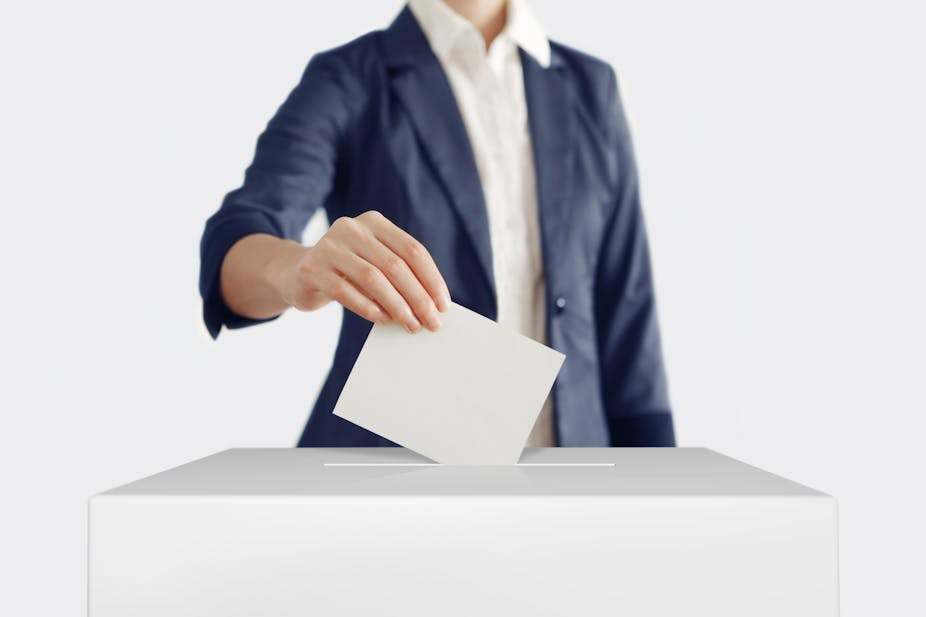Every vote counts. It’s the key principle underlying democracy. Through the history of democratic elections, people have created many safeguards to ensure votes are cast and counted fairly: paper ballots, curtains around voting booths, locked ballot boxes, supervised counting, provisions for recounting and more.
With the advent of computer technology has come the prospect of faster counting of votes, and even, some hope, more secure and accurate voting. But the internet has also enabled hackers to attack voting systems and has given disinformation campaigns new tools to influence public opinion. Here are highlights of The Conversation’s coverage of these issues.
1. Voting machines are old
After the debacle of the 2000 election’s efforts to count votes, the federal government handed out massive amounts of money to the states to buy newer voting equipment that, everyone hoped, would avoid a repeat of the “hanging chad” mess. But almost two decades later, as Lawrence Norden and Christopher Famighetti at the Brennan Center for Justice at New York University explain, that one-time cash infusion has left a troubling legacy of aging voting machines:
“Imagine you went to your basement and dusted off the laptop or mobile phone that you used in 2002. What would happen if you tried to turn it on?”
That’s the machinery U.S. democracy depends on.
2. Not everyone can use the devices
Most voting machines don’t make accommodations for people with physical disabilities that affect how they vote. Juan Gilbert at the University of Florida quantifies the problem:
“In the 2012 presidential election, … The turnout rate for voters with disabilities was 5.7 percent lower than for people without disabilities. If voters with disabilities had voted at the same rate as those without a disability, there would have been three million more voters weighing in on issues of local, state and national significance.”
To date, most efforts to solve the problems have involved using special voting equipment just for people with particular disabilities. That’s expensive and inefficient – and remember, separate is not equal. Gilbert has invented an open-source (read: inexpensive) voting machine system that can be used by people with many different disabilities, as well as people without disabilities.
With the system, which has been tested and approved in several states, voters can cast their ballots using a keyboard, a joystick, physical buttons, a touchscreen or even their voice.
3. Machines are not secure
In part because of their age, nearly every voting machine in use is vulnerable to various sorts of cyberattacks. For years, researchers have documented ways to tamper with vote counts, and yet few machines have had their cyberdefenses upgraded.
The fact that the election system is so widespread – with multiple machines in every municipality nationwide – also makes it weaker, writes Richard Forno at the University of Maryland, Baltimore County: There are simply more opportunities for an attacker to find a way in.
“Voter registration and administration systems operated by state and national governments are at risk too. Hacks here could affect voter rosters and citizen databases. Failing to secure these systems and records could result in fraudulent information in the voter database that may lead to improper (or illegal) voter registrations and potentially the casting of fraudulent votes.”
4. Even without an attack, major concerns
Even if an attack never happens – or if nobody can prove one happened – public trust in elections is vulnerable to sore losers taking advantage of the fact that cyberweaknesses exist. Just that prospect could destabilize the country, argues Herbert Lin of Stanford University:
“State and local election officials can and should provide for paper backup of voting this (and every) November. But in the end, debunking claims of election rigging, electronically or otherwise, amounts to trying to prove something didn’t happen – it can’t be done.”
5. The Russians are a factor
American University historian Eric Lohr explains the centuries of experience Russia has in meddling in other countries’ affairs, but notes that the U.S. isn’t innocent itself:
“In fact, the U.S. has a long record of putting its finger on the scales in elections in other countries.”
Neither country is unique: Countries have attempted to influence each other’s domestic politics throughout history.
6. The real problems aren’t technological at all
In any case, the major threats to U.S. election integrity have to do with domestic policies governing how voting districts are designed, and who can vote.
Penn State technologist Sascha Meinrath discusses how partisan panels have “systematically drawn voting districts in ways that dilute the power of their opponent’s party,” and “chosen to systematically disenfranchise poor, minority and overwhelmingly Democratic-leaning constituencies.”
There’s plenty of work to be done.
Editors’ note: This is an updated version of an article originally published Oct. 18, 2016.

